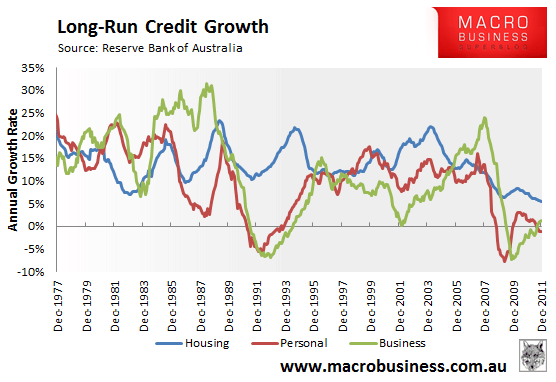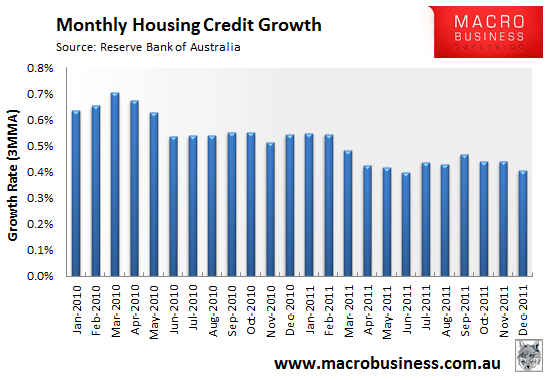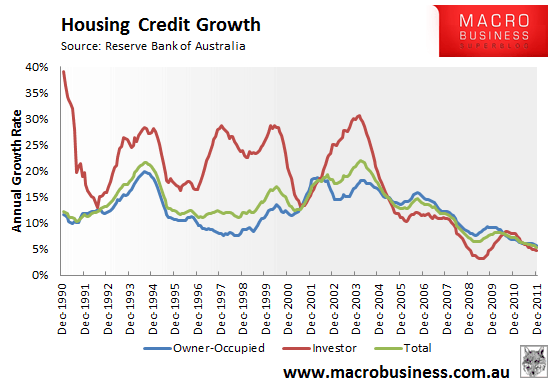
The Reserve Bank of Australia (RBA) has just released the private sector credit aggregates data for the month of December:
Total credit provided to the private sector by financial intermediaries rose by 0.3 per cent over December 2011, after rising by 0.3 per cent over November. Over the year to December, total credit rose by 3.5 per cent.
Housing credit increased by 0.4 per cent over December, following an increase of 0.4 per cent over November. Over the year to December, housing credit rose by 5.4 per cent.
Other personal credit declined by 0.1 per cent over December, after rising by 0.1 per cent over November. Over the year to December, other personal credit decreased by 1.0 per cent.
Business credit rose by 0.3 per cent over December, after increasing by 0.2 per cent over November. Over the year to December, business credit increased by 1.4 per cent.
A chart showing the long-run breakdown in the components is provided below:

As you can see, personal credit growth (-0.1% MoM; -0.3% QoQ; -1.0% YoY) continues to deleverage, whereas business credit growth (0.3% MoM; 0.5% QoQ; 1.4% YoY) and housing credit growth (0.4% MoM; 1.2% QoQ; 5.4% YoY) remains postive, but at subdued levels relative to their long-run average growth rates.
Focusing on the housing market, annual credit growth has now hit a fresh all time (35-year) low of 5.4%. The RBA also revised down credit growth for the month of November, from 0.5 to 0.4%.
The below chart, showing monthly housing credit growth on a 3-month moving average basis (3MMA), also clearly illustrates that housing credit growth has been trending down since September 2011:

Finally, a breakdown of owner-occupied credit (0.4% MoM; 1.3% QoQ; 5.7% YoY) and investor credit (0.3% MoM; 1.0% QoQ; 4.8% YoY) is provided below:

It seems that housing investors are shunning the housing market, possibly due the poor yields on offer as well as the subdued outlook for capital growth.
Overall, it’s a poor data set that supports a continuation of the ‘slow melt’ in Australian house prices.

